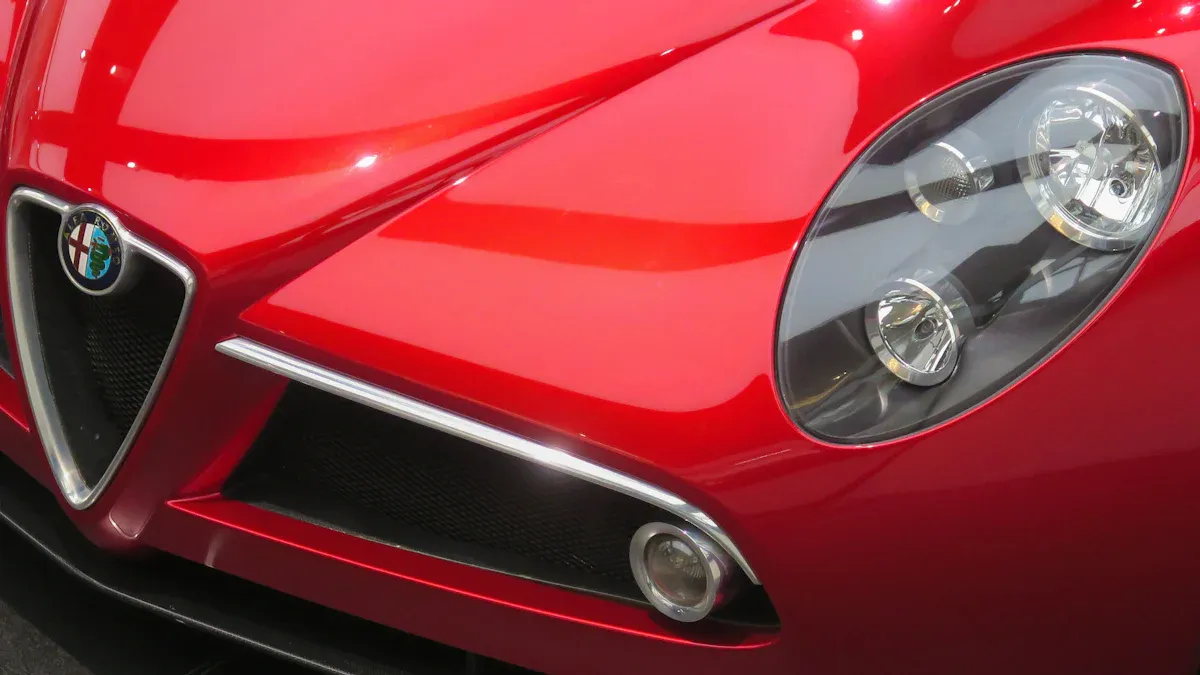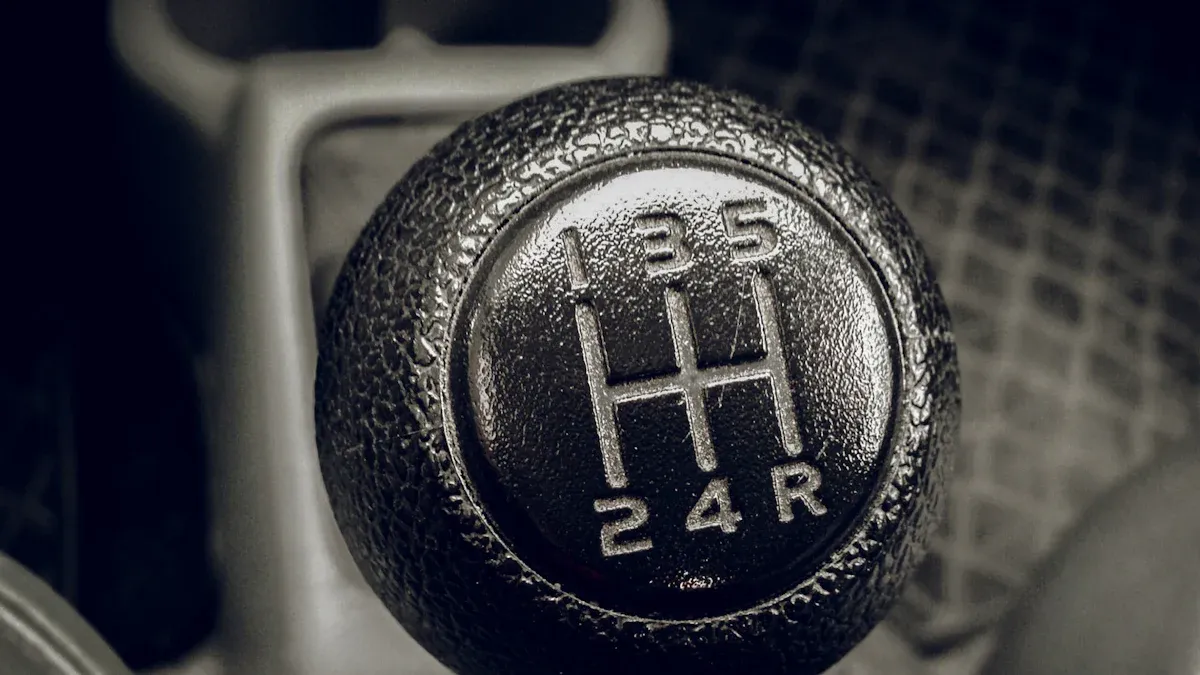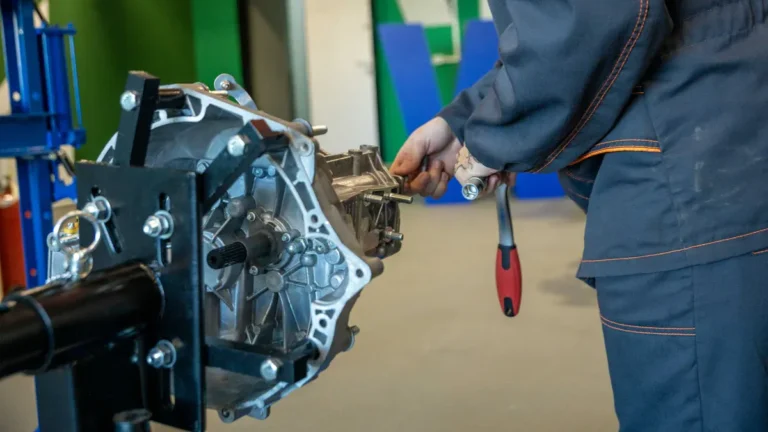
Alfa Romeo no longer produces manual transmissions. This marks a significant shift in the automotive landscape. Once a popular choice, manual transmissions now account for less than 1% of new car sales in the US. In 1980, nearly 35% of new vehicles featured this option. The decline has been steady, reflecting changing consumer preferences and technological advancements. As you explore this topic, consider the historical importance of manual transmissions and how they shaped driving experiences.
Key Takeaways
Alfa Romeo has phased out manual transmissions due to low consumer demand, with less than 1% of buyers choosing this option.
The decline of manual transmissions reflects a broader trend where over 85% of new cars sold in North America now feature automatic systems.
Despite the decline, manual transmissions still appeal to driving enthusiasts who value control and engagement in their driving experience.
Technological advancements in automatic transmissions have made them more efficient and appealing, contributing to the shift away from manuals.
Some brands are considering reintroducing manual options, indicating a potential niche market for driving enthusiasts in the future.
Alfa Romeo Manual Transmission History

Iconic Models
Alfa Romeo has a rich history of producing vehicles with manual transmissions. Many iconic models showcased this feature, allowing drivers to enjoy a more engaging driving experience. Here are some notable examples:
Model | Engine and Transmission | Production Year(s) |
|---|---|---|
Alfa Romeo 1900 | 1.9-litre inline-four, four-speed manual | 1950-1959 |
Alfa Romeo Giulietta | 1.3-litre inline-four, four-speed manual | 1954-1965 |
Alfa Romeo 2600 | 2.6-litre straight-six, four-speed manual | 1962-1968 |
Alfa Romeo Giulia GTA | 1.6-litre inline-four, five-speed manual | 1965-1971 |
Alfa Romeo Duetto | 1.6-litre inline-four, five-speed manual | 1966-1994 |
Alfa Romeo 164 | 3.0-litre V6, five-speed manual | 1987-1998 |
These models not only defined Alfa Romeo’s legacy but also contributed to the brand’s reputation for performance and driving pleasure.
Evolution Over Time
Over the years, Alfa Romeo’s approach to manual transmissions evolved significantly. Initially, the brand focused on simple four-speed manuals. As technology advanced, they introduced five-speed options, enhancing performance and fuel efficiency.
In the 1970s and 1980s, Alfa Romeo began to incorporate more sophisticated designs. For instance, the Alfa Romeo 1750 GTV and 2000 GTV featured five-speed manual transmissions with advanced clutch systems. These models allowed drivers to experience a more responsive and dynamic ride.

As you can see, the production years of these models highlight the brand’s commitment to manual transmission options. However, as consumer preferences shifted towards automatics, Alfa Romeo gradually phased out manual offerings.
Current Status of Alfa Romeo Transmissions

Recent Model Changes
In recent years, Alfa Romeo has phased out manual transmission options in several of its models. The most notable changes include:
The Alfa Romeo Giulia and Stelvio models no longer offer manual transmissions.
The manual transmission option for the Giulia was briefly available in the U.S. in 2016.
This shift reflects a broader trend in the automotive industry, where manufacturers increasingly favor automatic transmissions due to their convenience and efficiency.
Manufacturer Insights
Alfa Romeo has officially confirmed that the Giulia Quadrifoglio will not feature a manual transmission in North America. The company attributes this decision to the low demand for manual gearboxes in the region. This aligns with the overall decline in manual transmission popularity among consumers.
Currently, Alfa Romeo’s latest models come equipped with advanced automatic transmission systems. Here’s a look at the transmission options available:
Model | Engine Type | Transmission Type |
|---|---|---|
Giulia | 2.0-liter turbocharged | 8-speed automatic |
Stelvio | High-performance aluminum | ZF 8-speed automatic |
These automatic transmissions enhance performance and provide a smoother driving experience. Automotive journalists have praised these systems for their responsiveness, especially during high-performance driving scenarios. For example, the Stelvio Quadrifoglio Q4 showcases its 510 horsepower and effective paddle shifts, allowing for spirited driving and impressive handling.
In comparison to other European luxury car manufacturers, Alfa Romeo’s offerings stand out. Here’s how they stack up:
Feature | Alfa Romeo | Mercedes-Benz |
|---|---|---|
Engine | 2.0L 4-cylinder, 280 hp | Varies by model |
Torque | 306 lb-ft | Varies by model |
Transmission | 8-speed automatic | Varies by model |
Alfa Romeo vehicles utilize an eight-speed automatic transmission, which enhances acceleration and aligns with the brand’s Italian design philosophy. This focus on performance and aesthetics sets Alfa Romeo apart in the competitive luxury segment.
Decline of Manual Transmissions
Consumer Preferences
You may have noticed a significant shift in consumer preferences regarding vehicle transmissions. Many drivers now favor automatic transmissions over manuals. This trend stems from the increasing demand for convenience and ease of use, especially in urban environments.
Recent data shows that automatic transmissions dominate the market. In North America, over 85% of passenger vehicles sold feature automatic systems. In Europe, about 55% of newly registered cars are automatic. This shift reflects a broader global trend, where automatic transmissions account for over 70% of sales.
Younger drivers, particularly those aged 18-34, still show some interest in manual transmissions. Approximately 62% of this demographic express a desire to learn how to drive a manual. However, this interest does not translate into widespread purchases. Most consumers prioritize the convenience of automatic systems, especially in stop-and-go traffic.
Technological Impact
Technological advancements have played a crucial role in the decline of manual transmissions. Modern automatic transmissions offer several advantages that make them more appealing to drivers. Here are some key factors:
Efficiency: Automatic transmissions now outperform manuals in fuel economy. They provide smoother shifts and better overall performance.
Advanced Features: Many safety technologies, such as adaptive cruise control and automatic emergency braking, are optimized for automatic transmissions. These features enhance safety and convenience, making them more attractive to consumers.
Performance Enhancements: New technologies like dual-clutch systems and continuously variable transmissions (CVTs) improve acceleration and fuel efficiency. These innovations allow automatic transmissions to deliver a more dynamic driving experience.
The rise of hybrid and electric vehicles has also contributed to the decline of manual options. Electric motors often eliminate the need for traditional transmissions, leading manufacturers to focus on simpler designs. Some brands, like Toyota, are exploring manual-like experiences in their electric models, but these remain niche offerings.
Future of Manual Transmissions
Potential Resurgence
You might wonder if manual transmissions could make a comeback in the automotive market. Several factors suggest a potential resurgence. For instance, certain regions, especially in Europe, still favor manual gearboxes due to cultural preferences. Many drivers appreciate the control and engagement that manuals provide.
Additionally, some automotive brands are planning to reintroduce manual options in their future models. Here’s a look at some of these brands and their upcoming models:
Brand | Model | Manual Transmission Availability | MSRP Range |
|---|---|---|---|
Acura | Integra/Integra Type S | Yes | $39,195 – $54,095 |
BMW | M2 | Yes | $66,675 |
Lotus | Emira | Yes | ~$105,400 |
Mazda | Mazda3 | Yes | $31,865 |
Mazda | MX-5 Miata | Yes | $30,515 – $38,535 |
Toyota | GR86 | Yes | $31,135 – $36,405 |
Toyota | GR Corolla | Yes | $39,995 – $47,125 |
Toyota | Tacoma | Yes | $38,485 – $43,295 |
Market Predictions
Industry experts predict that the manual transmission market will grow at a compound annual growth rate (CAGR) of 4.3% from 2025 to 2035. Key regions like China and India are expected to see even higher growth rates of 5.8% and 5.4%, respectively. This growth is driven by demand for entry-level vehicles and local manufacturing capabilities.
Despite the overall decline in manual transmission popularity, they remain favored for their affordability and mechanical simplicity. Many driving enthusiasts continue to support manual options, especially in commercial applications.
However, current trends in sports and luxury vehicles show a significant reduction in manual options. The discontinuation of models like the BMW Z4 and Toyota Supra highlights this shift. As manufacturers focus on automatic and electrified vehicles, the manual driving experience may become less common.

Alfa Romeo does not currently offer manual transmissions, marking a significant change in the automotive landscape. Here are some key points to consider:
Manual transmissions have played a crucial role in automotive history. They introduced innovations like synchronized gear shifting in the 1920s, which improved user experience.
The decline in manual options reflects changing consumer preferences. Many drivers now favor the convenience of automatic systems.
Despite this trend, manual transmissions still hold a special place in driving culture. They symbolize skill and engagement, fostering a community of enthusiasts.
“We were looking at a take rate of one percent, and that’s obviously too low,” said Alfa Romeo spokesperson Berj Alexanian. This statement highlights the brand’s focus on meeting consumer demand while maintaining performance.
The future of manual transmissions remains uncertain. While they may not dominate the market, their legacy continues to influence driving experiences.
FAQ
What is the main reason Alfa Romeo stopped making manual transmissions?
Alfa Romeo stopped producing manual transmissions due to low consumer demand. The brand found that less than 1% of buyers preferred this option, leading to a shift towards automatic systems.
Are there any Alfa Romeo models that still offer manual transmissions?
Currently, no Alfa Romeo models offer manual transmissions. The brand has phased out this option in favor of advanced automatic transmissions across its lineup.
Why do many drivers prefer automatic transmissions over manuals?
Drivers often prefer automatic transmissions for their convenience and ease of use. Automatic systems simplify driving, especially in heavy traffic, making them more appealing to the majority of consumers.
Could manual transmissions make a comeback in the future?
While unlikely, some regions still favor manual transmissions. Certain brands plan to reintroduce manual options, driven by demand from driving enthusiasts who appreciate the engagement of manual gearboxes.
What are the benefits of driving a manual transmission vehicle?
Driving a manual transmission vehicle offers greater control and engagement. Many enthusiasts enjoy the hands-on experience and the ability to optimize performance through gear selection.



